[List of Test Results Collected with EUC Score Experiments]
Dizzion
Analyzing Dizzion Frame Desktop as a Service and Cloud PC performance on Azure, Amazon Web Services (AWS), Google Cloud Platform (GCP) and IBM Cloud VPC. Remoting protocols are Frame Remoting Protocol (FRP), Microsoft Remote Desktop Protocol (RDP) and Citrix HDX The test results presented here are a subset of the complete data sets collected during multiple test sequences.
- Impact of Different Network Conditions on the FRP Protocol
- Comparison between Dizzion FRP and Microsoft RDP 11 (classic)
- Comparison between Dizzion FRP and Citrix HDX
- Dizzion Frame DaaS on Azure VMs with GPU - RDP vs FRP
- Dizzion Frame DaaS on AWS VMs with GPU - RDP vs FRP
- Dizzion Frame DaaS on GCP VMs with GPU - RDP vs FRP
It is important to note that in some of the older test sequences the Frame Remoting Protocol (FRP) delivers 60 frames per second while Microsoft RDP delivers 30 frames per second to the endpoint device. This may result in higher network consumption on the FRP side.
If you want to learn how the EUC Score results were produced then check out EUC Score Test Methodology and EUC Score Toolset.
Impact of Different Network Conditions on the FRP Protocol
Test Goal
Measure the impact of network packet loss (0%, 2%, 5%), network round trip time (10ms, 110ms, 310ms), and network bandwidth (100mbps, 8mbps, 2mbps) on the Dizzion FRP protocol.
Selected Sync Player Clips
| Simload and Link | View and Type | Observation | |
|---|---|---|---|
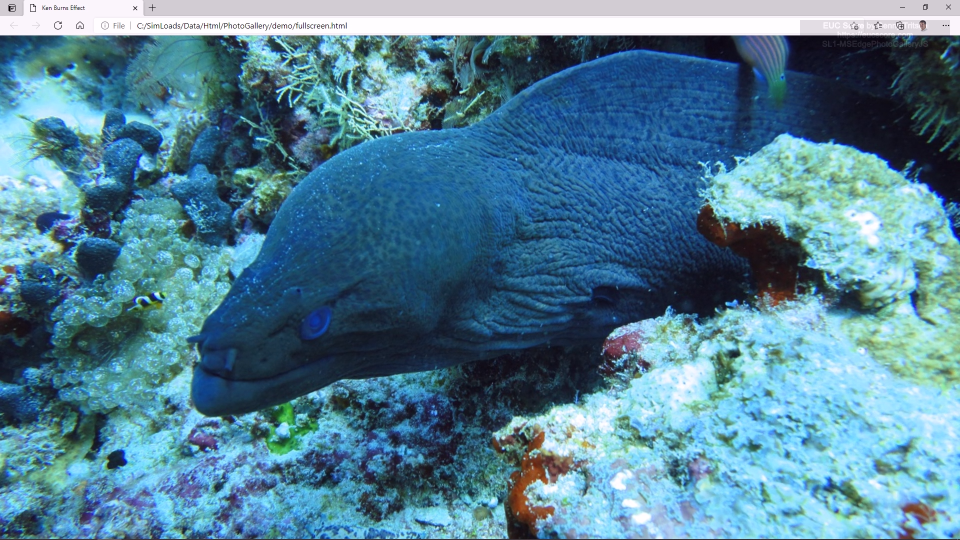 |
SL1-MSEdgePhotoGalleryJS
[FRP Telemetry] |
Packet Loss 0.0% vs 2.0% |
High packet loss rate causes sporadic stuttering. |
 |
SL1-MSEdgePhotoGalleryJS
[FRP Telemetry] |
Packet Loss 0.0% vs 5.0% |
Very high packet loss rate causes more stuttering. |
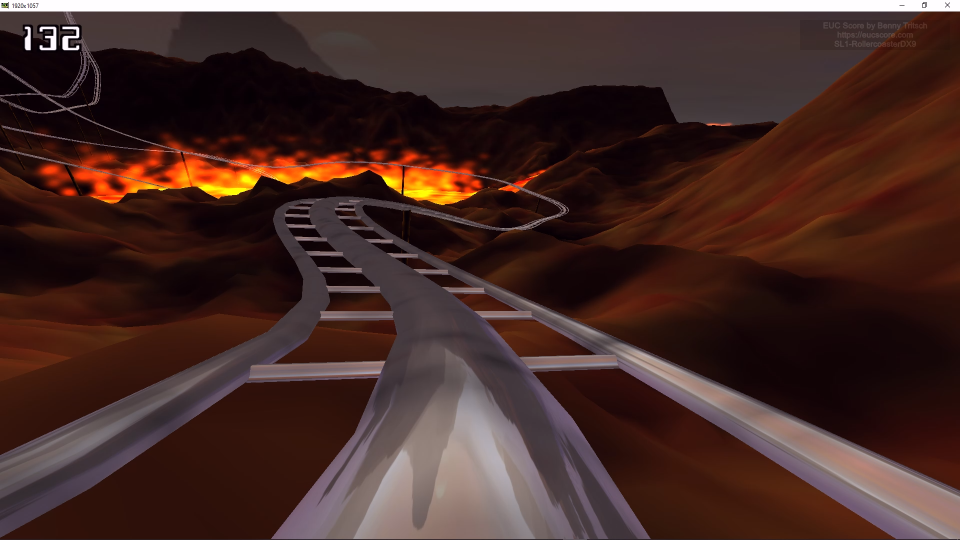 |
SL1-RollercoasterDX9
[FRP Telemetry] |
Packet Loss 0.0% vs 2.0% |
High packet loss rate causes sporadic stuttering. |
 |
SL1-RollercoasterDX9
[FRP Telemetry] |
Packet Loss 0.0% vs 5.0% |
Very high packet loss rate causes more stuttering. |
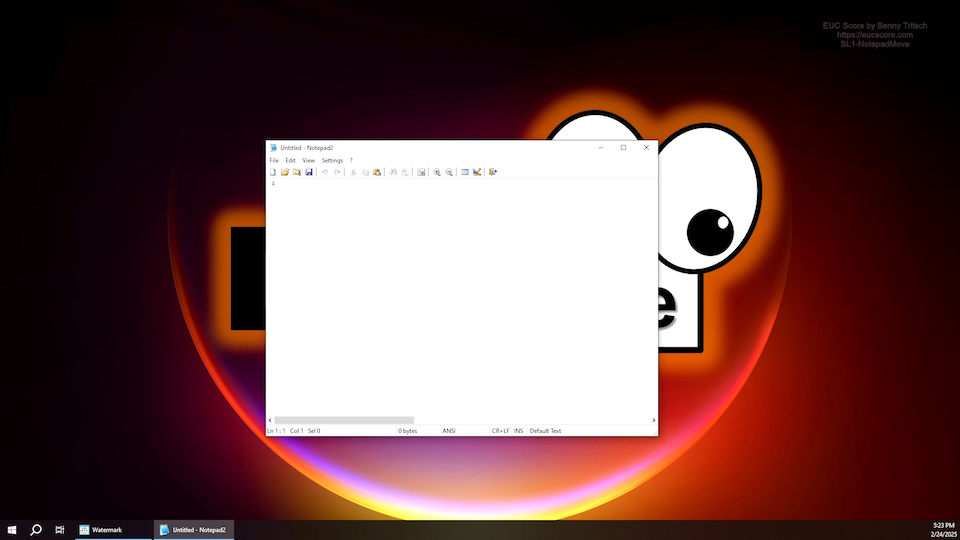 |
SL1-NotepadMove
[FRP Telemetry] |
Packet Loss 0.0% vs 5.0% |
Very high packet loss rate causes some stuttering. |
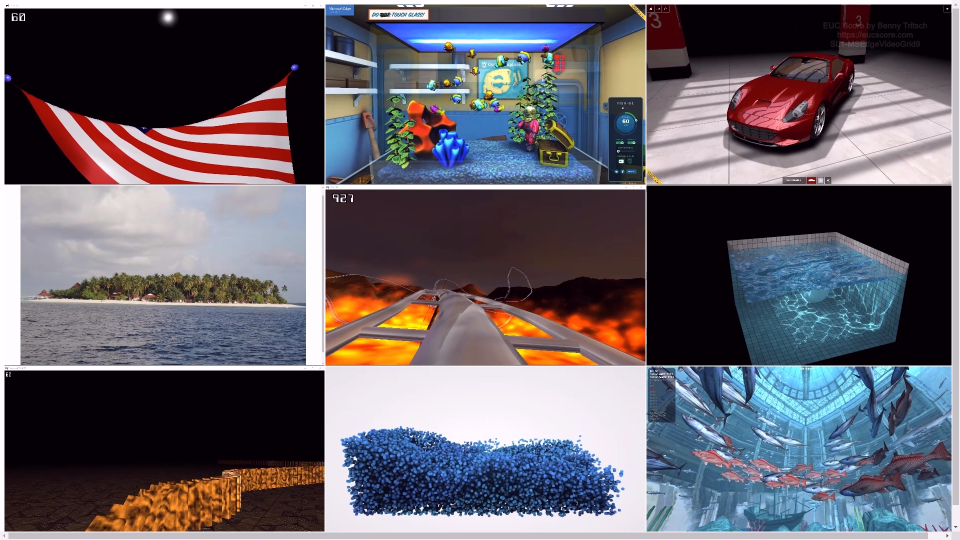 |
SL1-MSEdgeVideoGrid9
[FRP Telemetry] |
Round Trip Time 10ms vs 110ms |
High RTT does not change image quality and frame rate. |
 |
SL1-MSEdgeVideoGrid9
[FRP Telemetry] |
Round Trip Time 10ms vs 310ms |
Very high RTT does not change image quality and frame rate. |
 |
SL1-RollercoasterDX9
[FRP Telemetry] |
Bandwidth 100mbps vs 8mbps |
Low bandwidth introduces compression artifacts. |
 |
SL1-MSEdgeVideoGrid9
[FRP Telemetry] |
Bandwidth 100mbps vs 2mbps |
Very low bandwidth affects image quality and frame rate. |
Summary of Test Observations
Adding network constraints influences the visual quality of Dizzion Cloud PC sessions connected via FRP. A higher amount of Packet loss introduces stuttering in animations and videos. Adding a higher amount of network latency doesn't have an impact on graphics quality, but due to the higher user interface response times it's much harder for a user to interact with the desktop and the apps. Reducing the network bandwidth results in compression artifacts and reduced frame rates in many test workloads.
Test Setup Details
Dizzion Cloud PC Baseline (Unconstrained)
Dizzion Cloud PC Comparison
System Under Test: Dizzion Cloud PC, Azure Germany West Central, Windows 11 Enterprise, Intel Xeon Platinum 8370C 8vCPUs @ 2.80GHz, 32GB RAM, 128GB HDD (SAS), Frame Server 9.4.5.0, Frame Guest Agent 2.4.2.0, 1920x1080 Screen Resolution @ 30Hz, Single Monitor Setup.
System Under Test: Dizzion Cloud PC, Azure Germany West Central, Windows 11 Enterprise, Intel Xeon Platinum 8370C 8vCPUs @ 2.80GHz, 32GB RAM, 128GB HDD (SAS), Frame Server 9.4.5.0, Frame Guest Agent 2.4.2.0, 1920x1080 Screen Resolution @ 30Hz, Single Monitor Setup.
Connection: Dizzion FRP, 100mbps bandwidth, 10ms RTT, 0.0% packet loss.
Connection: Dizzion FRP, different network conditions: 2% and 5% packet loss, 110ms and 310ms RTT, 8mbps and 2mbps bandwidth.
Endpoint: ASUS NUC 15 PRO, Windows 11, Intel Core Ultra 7 255H 16Cores @ 2.0GHz, 32GB RAM, Samsung SSD 990 EVO Plus 1TB, Intel Arc 140T GPU, 2GB VRAM, Google Chrome 140.0.7339.81.
Endpoint: ASUS NUC 15 PRO, Windows 11, Intel Core Ultra 7 255H 16Cores @ 2.0GHz, 32GB RAM, Samsung SSD 990 EVO Plus 1TB, Intel Arc 140T GPU, 2GB VRAM, Google Chrome 140.0.7339.81.
Comparison between Dizzion FRP and Microsoft RDP 11 (classic)
Test Goal
Compare a Dizzion Cloud PC and a Microsoft Remote Desktop (Classic RDP) under different network conditions.
Selected Sync Player Clips
| Simload and Link | View and Type | Observation | |
|---|---|---|---|
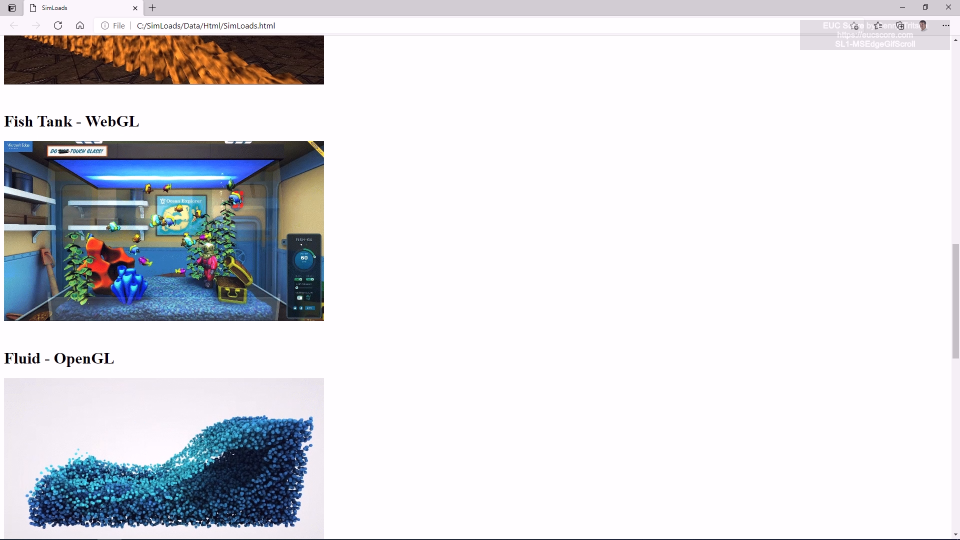 |
SL1-MSEdgeGifScroll1 | Unconstrained FRP vs RDP11 |
No visual difference, but FRP requires less bandwidth. |
 |
SL1-MSEdgeHtmlScroll | Unconstrained FRP vs RDP11 |
Smoother scrolling with FRP, but higher bandwidth required. |
 |
SL1-MSEdgePhotoGalleryJS | Unconstrained FRP vs RDP11 |
Smoother animation with FRP, but higher bandwidth required. |
 |
SL1-NotepadMove | 2% Packet Loss FRP vs RDP11 |
The app window moves smoother in the FRP session. |
 |
SL1-NotepadMove | 5% Packet Loss FRP vs RDP11 |
Freeze frames with RDP, only some stuttering with FRP. |
 |
SL1-MSEdgePhotoGalleryJS | 5% Packet Loss FRP vs RDP11 |
Freeze frames with RDP, only some stuttering with FRP. |
 |
SL1-RollercoasterDX9 | 5% Packet Loss FRP vs RDP11 |
Freeze frames with RDP, only some stuttering with FRP. |
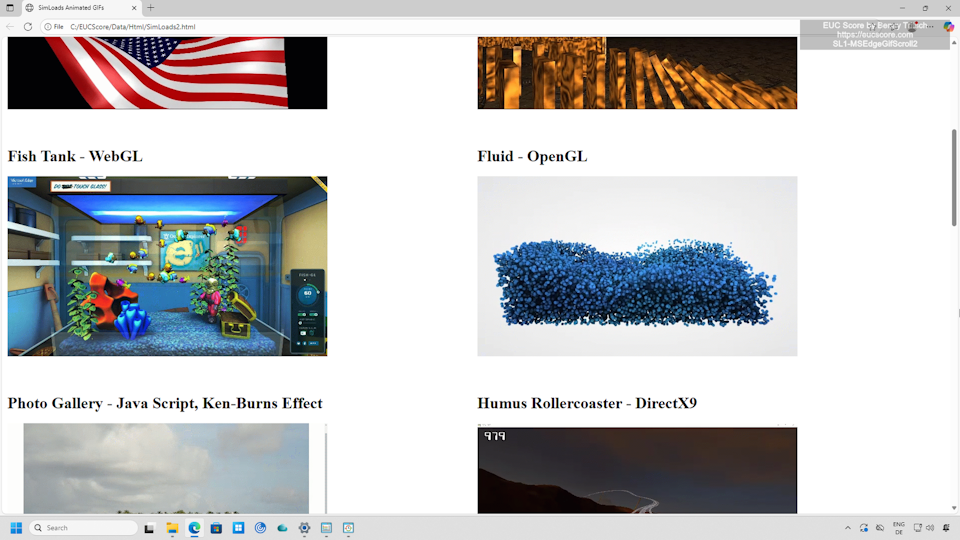 |
SL1-MSEdgeGifScroll2 | 110ms RTT FRP vs RDP11 |
Smooth animated GIFs with FRP, but stuttering with RDP. |
 |
SL1-RollercoasterDX9 | 310ms RTT FRP vs RDP11 |
No visual difference, but FRP requires more bandwidth. |
 |
SL1-MSEdgePhotoGalleryJS | 310ms RTT FRP vs RDP11 |
No visual difference, but FRP requires more bandwidth. |
 |
SL1-MSEdgeVideoGrid9 | 8mbps Bandwidth FRP vs RDP11 |
Lower video quality and reduced frame rates with RDP. |
 |
SL1-MSEdgePhotoGalleryJS | 2mbps Bandwidth FRP vs RDP11 |
Better image quality with FRP. |
 |
SL1-RollercoasterDX9 | 2mbps Bandwidth FRP vs RDP11 |
More compression artifacts with RDP. |
Summary of Test Observations
Without network constraints, many workloads don't show a big visual difference between FRP and RDP11. In some cases, RDP requires less bandwidth than FRP, but there are exceptions. In some workloads, FRP shows better image and animation quality. FRP is better able to handle packet loss. Even with increasing latency, FRP shows good performance, but often requires more bandwidth. Low network bandwidth also poses no problems for FRP. Compared to RDP, FRP generally offers better image quality under low bandwidth conditions. Across almost all workloads and regardless of network conditions, the FRP session requires more CPU capacity than the RDP session.
Test Setup Details
Dizzion Cloud PC
Microsoft Remote Desktop
System Under Test: Dizzion Cloud PC, Azure Germany West Central, Windows 11 Enterprise, Intel Xeon Platinum 8370C 8vCPUs @ 2.80GHz, 32GB RAM, 128GB HDD (SAS), Frame Server 9.4.5.0, Frame Guest Agent 2.4.2.0, 1920x1080 Screen Resolution @ 30Hz, Single Monitor Setup.
System Under Test: Dizzion Cloud PC, Azure Germany West Central, Windows 11 Enterprise, Intel Xeon Platinum 8370C 8vCPUs @ 2.80GHz, 32GB RAM, 128GB HDD (SAS), 1920x1080 Screen Resolution @ 30Hz, Single Monitor Setup.
Connection: Dizzion FRP, different network conditions.
Connection: Microsoft Classic RDP (RDP11), different network conditions.
Endpoint: ASUS NUC 15 PRO, Windows 11, Intel Core Ultra 7 255H 16Cores @ 2.0GHz, 32GB RAM, Samsung SSD 990 EVO Plus 1TB, Intel Arc 140T GPU, 2GB VRAM, Google Chrome 140.0.7339.81.
Endpoint: ASUS NUC 15 PRO, Windows 11, Intel Core Ultra 7 255H 16Cores @ 2.0GHz, 32GB RAM, Samsung SSD 990 EVO Plus 1TB, Intel Arc 140T GPU, 2GB VRAM, RDC 10.0.26.100.
Comparison between Dizzion FRP and Citrix HDX
Test Goal
Compare a Dizzion Cloud PC and a Citrix Cloud PC (Windows 365) under different network conditions.
Important: The test results for Citrix for Windows 365 presented here are underwhelming. The reasons for this are not yet entirely clear. Further reference tests using the HDX protocol will be conducted in the near future to verify the results.
Selected Sync Player Clips
| Simload and Link | View and Type | Observation | |
|---|---|---|---|
 |
SL1 -MSEdgeVideoConf4 | Unconstrained FRP vs HDX |
No visual difference, but FRP requires less bandwidth. |
 |
SL1-NotepadMove | 2% Packet Loss FRP vs HDX |
Smooth animation on both sides, FRP requires more bandwidth. |
 |
SL1-RollercoasterDX9 | 5% Packet Loss FRP vs HDX |
HDX session shows block artifacts, FRP requires more bandwidth. |
 |
SL1-MSEdgeGifScroll2 | 110ms RTT FRP vs HDX |
Smooth animated GIFs on both sides, FRP requires more bandwidth. In contrast, the CPU requirement is higher in the HDX session. |
 |
SL1-RollercoasterDX9 | 310ms RTT FRP vs HDX |
No visual difference, but FRP requires more bandwidth. |
 |
SL1-MSEdgePhotoGalleryJS | 310ms RTT FRP vs HDX |
Animation in HDX session is struggling. |
 |
SL1-MSEdgeVideoGrid9 | 8mbps Bandwidth FRP vs HDX |
Lower video quality with HDX. |
 |
SL1-MSEdgeFishbowlHTML5 | 2mbps Bandwidth FRP vs HDX |
Better animation quality with FRP. |
 |
SL1-MSEdgePhotoGalleryJS | 2mbps Bandwidth FRP vs HDX |
Better image and transition quality with FRP. |
 |
SL1-RollercoasterDX9 | 2mbps Bandwidth FRP vs HDX |
More compression artifacts with HDX. |
Summary of Test Observations
Without network constraints, most workloads don't show a visual difference between FRP and HDX. In most cases, HDX requires less bandwidth than FRP, but there are exceptions. Under limited network conditions, most FRP test runs also show better image and animation quality, but higher bandwidth requirements. With few exceptions, there is no significant difference in CPU capacity requirements when workloads run in either an FRP or an HDX session.
Test Setup Details
Dizzion Cloud PC
Citrix for Windows 365
System Under Test: Dizzion Cloud PC, Azure Germany West Central, Windows 11 Enterprise, Intel Xeon Platinum 8370C 8vCPUs @ 2.80GHz, 32GB RAM, 128GB HDD (SAS), Frame Server 9.4.5.0, Frame Guest Agent 2.4.2.0, 1920x1080 Screen Resolution @ 30Hz, Single Monitor Setup.
System Under Test: Citrix for Windows 365, Azure Germany West Central, Windows 11 Enterprise, Intel Xeon Platinum 8370C 8vCPUs @ 2.80GHz, 32GB RAM, 128GB HDD, Citrix VDA 2402.0 CU1, 1920x1080 Screen Resolution @ 30Hz, Single Monitor Setup.
Connection: Dizzion FRP, different network conditions.
Connection: Citrix HDX, different network conditions.
Endpoint: ASUS NUC 15 PRO, Windows 11, Intel Core Ultra 7 255H 16Cores @ 2.0GHz, 32GB RAM, Samsung SSD 990 EVO Plus 1TB, Intel Arc 140T GPU, 2GB VRAM, Google Chrome 140.0.7339.81.
Endpoint: ASUS NUC 15 PRO, Windows 11, Intel Core Ultra 7 255H 16Cores @ 2.0GHz, 32GB RAM, Samsung SSD 990 EVO Plus 1TB, Intel Arc 140T GPU, 2GB VRAM, Citrix Workspace App 2503.
Dizzion Frame DaaS on Azure VMs with GPU
Test Goal
Compare an RDP session on a physical Windows workstation to Frame Remoting Protocol (FRP) connections to Windows VMs with GPU on Azure.
Selected Sync Player Clips
| Simload and Link | View and Type | Observation | |
|---|---|---|---|
 |
SL1-TessMarkOpenGL | NC4asT4-v3 RDP vs FRP |
NVIDIA Quadro M5000 vs Azure NC4asT4-v3 VM with NVIDIA T4 GPU: 650 FPS vs 800 FPS and smoother animation on the Azure side (40% CPU load). |
 |
SL1-TessMarkOpenGL | NC8asT4-v3 RDP vs FRP |
NVIDIA Quadro M5000 vs Azure NC8asT4-v3 VM with NVIDIA T4 GPU: Smoother animation and better rendering quality on the Azure side. Less overall CPU load (20%) when compared to the NC4asT4 v3 VM with approx. 40% load. |
 |
SL1-FurMarkOpenGL | NV12adsA10-v5 RDP vs FRP |
NVIDIA Quadro M5000 vs Azure NV12adsA10-v5 VM with NVIDIA A10-8Q vGPU: Slightly better user experience on the Azure side, despite the partitioned GPU. |
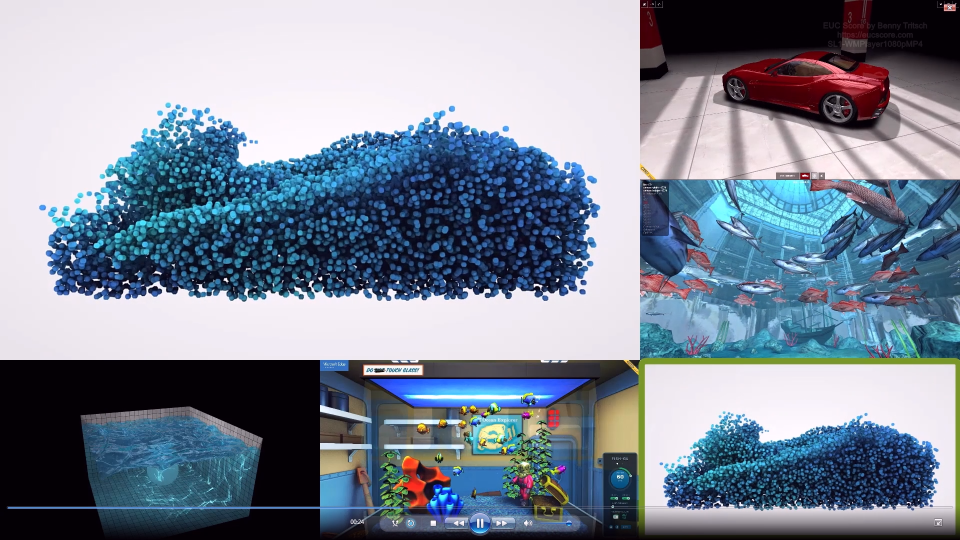 |
SL1-WMPlayer1080pMP4 | NV4as-v4 RDP vs FRP |
NVIDIA Quadro M5000 vs Azure NV4as-v4 VM with 1/8 AMD Radeon MI25 GPU: Without a video decoder in the GPU, video playback falls apart. |
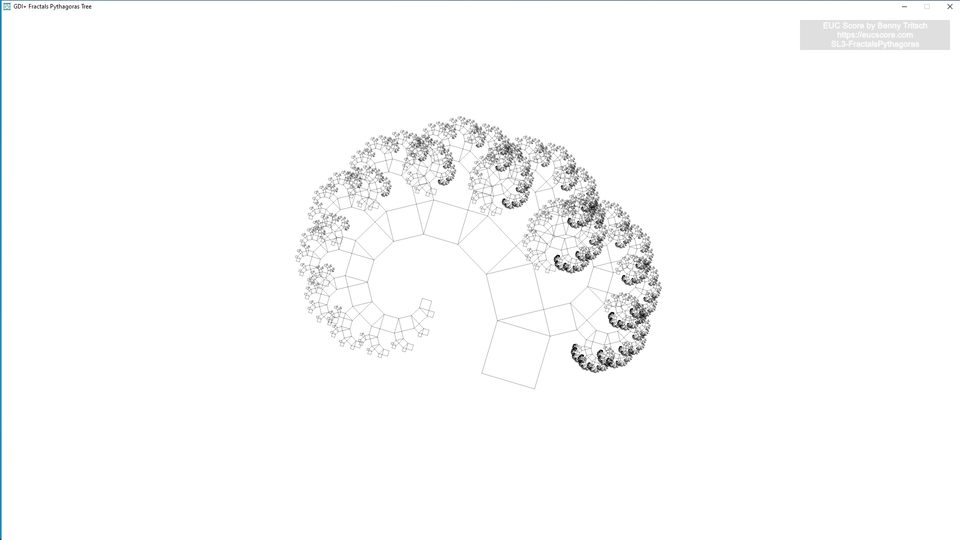 |
SL3-FractalsPythagoras | NV4as-v4 RDP vs FRP |
NVIDIA Quadro M5000 vs Azure NV4as-v4 VM with 1/8 AMD Radeon MI25 GPU: The CPU/GPU combo is not powerful enough for the fractals score. |
Summary of Test Observations
On Azure NC4asT4-v3, NC4asT8-v3 and NV12adsA10-v5 VM types, the overall performance is better than on the physical lab machine Lancelot. But when the combination of CPU and GPU is less powerful, the physical lab machine Lancelot performs better.
Test Setup Details
RDP Connection to Lancelot
FRP Connection to Azure VM
System Under Test: Physical Lab Machine Lancelot, Windows 11, Intel i7-11700K 16Threads @ 3.6GHz, 64GB RAM, Crucial MX500 SSD 1TB, NVIDIA Quadro M5000, 8GB VRAM.
System Under Test: Azure West Europe, different VM types with NVIDIA and AMD GPUs, Frame Display Driver.
Connection: RDP-UDP from Remote Desktop Connection Client, 20ms round trip time.
Connection: FRP8 UDP from Chrome browser, 4ms latency (= 8ms round trip time).
Endpoint: NUC2, Intel NUC 8i7HNK with Windows 11, i7-8705G CPU @ 3.10GHz, 16GB RAM, 500GB Samsung SSD 850 EVO M.2, AMD Radeon RX Vega M GL, 4GB VRAM.
Endpoint: NUC2, Intel NUC 8i7HNK with Windows 11, i7-8705G CPU @ 3.10GHz, 16GB RAM, 500GB Samsung SSD 850 EVO M.2, AMD Radeon RX Vega M GL, 4GB VRAM.
Dizzion Frame DaaS on AWS VMs with GPU
Test Goal
Compare an RDP session on a physical Windows workstation to Frame Remoting Protocol (FRP) connections to Windows VMs with GPU on Amazon Workspaces.
Selected Sync Player Clips
| Simload and Link | View and Type | Observation | |
|---|---|---|---|
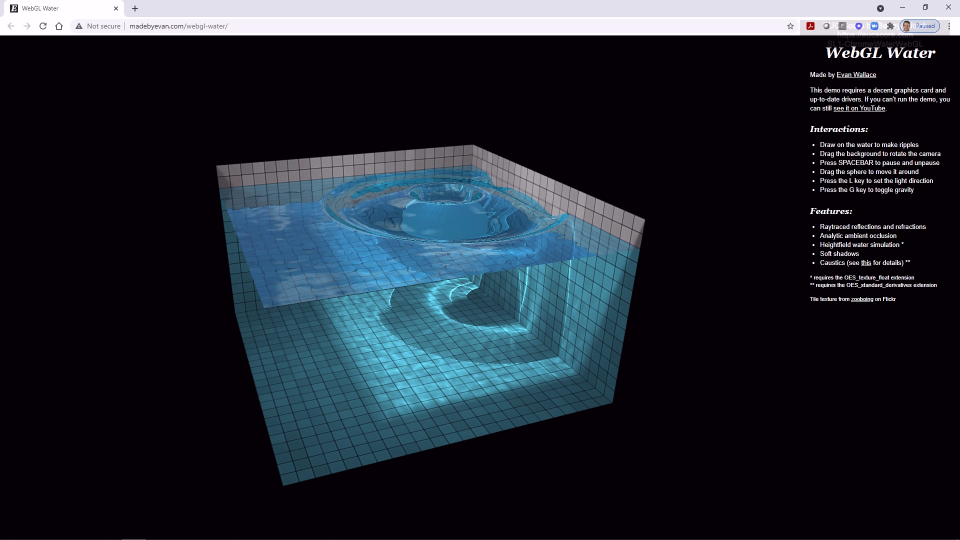 |
SL1-ChromeWaterWebGL | g4ad.xlarge RDP vs FRP |
NVIDIA Quadro M5000 vs AWS g4ad.xlarge VM with AMD Radeon Pro V520 MxGPU: The quality of the animation is much better on the AWS side. |
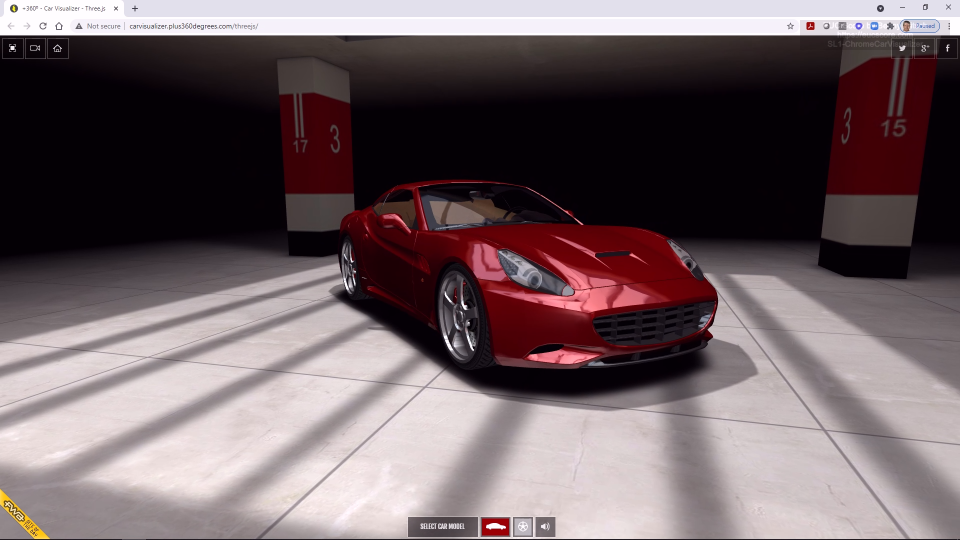 |
SL1-ChromeCarVisualizer | g4dn.2xlarge RDP vs FRP |
NVIDIA Quadro M5000 vs AWS g4dn.2xlarge VM with NVIDIA T4 GPU: Car rotates significantly faster on the AWS side. |
 |
SL1-FurMarkOpenGL | g4dn.2xlarge RDP vs FRP |
NVIDIA Quadro M5000 vs AWS g4dn.2xlarge VM with NVIDIA T4 GPU: Very smooth rendering and animation of the fur donat on the AWS side. |
Summary of Test Observations
The overall performance of the AWS DaaS VM types is better than on the physical lab machine Lancelot. The CPU on Lancelot shows less load due to higher CPU thread (= core) number and higher clock rate.
Test Setup Details
RDP Connection to Lancelot
FRP Connection to AWS VM
System Under Test: Physical Lab Machine Lancelot, Windows 11, Intel i7-11700K 16Threads @ 3.6GHz, 64GB RAM, Crucial MX500 SSD 1TB, NVIDIA Quadro M5000, 8GB VRAM.
System Under Test: AWS eu-central-1, EC2 g4ad.xlarge with AMD Radeon Pro V520 MxGPU or EC2 g4dn.2xlarge VM with NVIDIA T4 GPU, Frame Display Driver.
Connection: RDP-UDP from Remote Desktop Connection Client, 20ms round trip time.
Connection: FRP8 UDP from Chrome browser, 4ms latency (= 8ms round trip time).
Endpoint: NUC2, Intel NUC 8i7HNK with Windows 11, i7-8705G CPU @ 3.10GHz, 16GB RAM, 500GB Samsung SSD 850 EVO M.2, AMD Radeon RX Vega M GL, 4GB VRAM.
Endpoint: NUC2, Intel NUC 8i7HNK with Windows 11, i7-8705G CPU @ 3.10GHz, 16GB RAM, 500GB Samsung SSD 850 EVO M.2, AMD Radeon RX Vega M GL, 4GB VRAM.
Dizzion Frame DaaS on GCP with GPU
Test Goal
Compare an RDP session on a physical Windows workstation to Frame Remoting Protocol (FRP) connections to Windows VMs with GPU on Google Cloud Platform.
Selected Sync Player Clips
| Simload and Link | View and Type | Observation | |
|---|---|---|---|
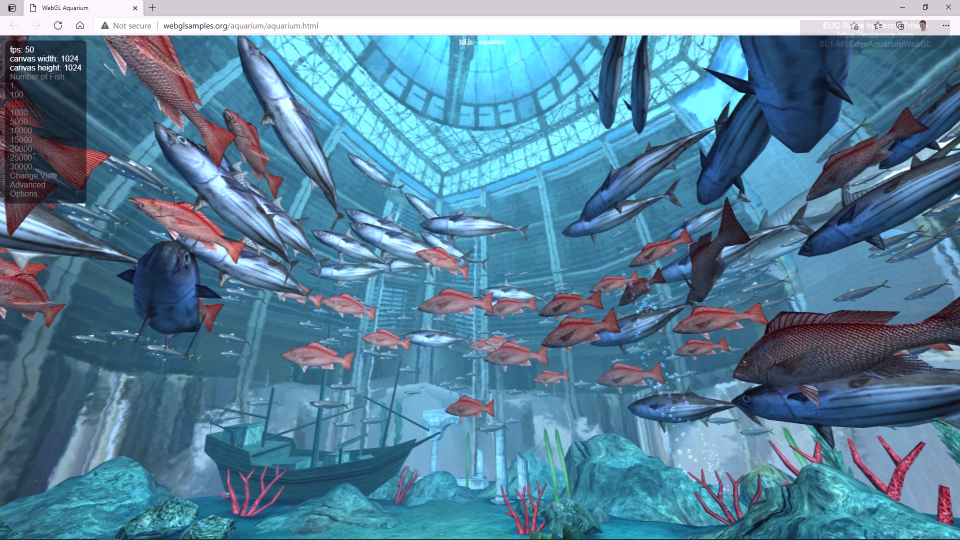 |
SL1-MSEdgeAquariumWebGL | N1-Standard-4-GPU-T4 RDP vs FRP |
NVIDIA Quadro M5000 vs GCP N1-Standard-4-GPU-T4-Windows VM with NVIDIA T4 GPU: Higher frame rate and smoother animation on the GCP side, despite the much less powerful CPU. |
Summary of Test Observations
The performance of the GCP DaaS VM types is better than on the physical lab machine Lancelot. The CPU on Lancelot shows less load due to higher CPU thread (= core) number and higher clock rate.
Test Setup Details
RDP Connection to Lancelot
FRP Connection to GCP VM
System Under Test: Physical Lab Machine Lancelot, Windows 11, Intel i7-11700K 16Threads @ 3.6GHz, 64GB RAM, Crucial MX500 SSD 1TB, NVIDIA Quadro M5000, 8GB VRAM.
System Under Test: GCP europe-west4, N1-Standard-4-GPU-T4-Windows VM with NVIDIA T4 GPU, Frame Display Driver.
Connection: RDP-UDP from Remote Desktop Connection Client, 20ms round trip time.
Connection: FRP8 UDP from Chrome browser, 4ms latency (= 8ms round trip time).
Endpoint: NUC2, Intel NUC 8i7HNK with Windows 11, i7-8705G CPU @ 3.10GHz, 16GB RAM, 500GB Samsung SSD 850 EVO M.2, AMD Radeon RX Vega M GL, 4GB VRAM.
Endpoint: NUC2, Intel NUC 8i7HNK with Windows 11, i7-8705G CPU @ 3.10GHz, 16GB RAM, 500GB Samsung SSD 850 EVO M.2, AMD Radeon RX Vega M GL, 4GB VRAM.
 Benny Tritsch
Benny Tritsch Ruben Spruijt
Ruben Spruijt